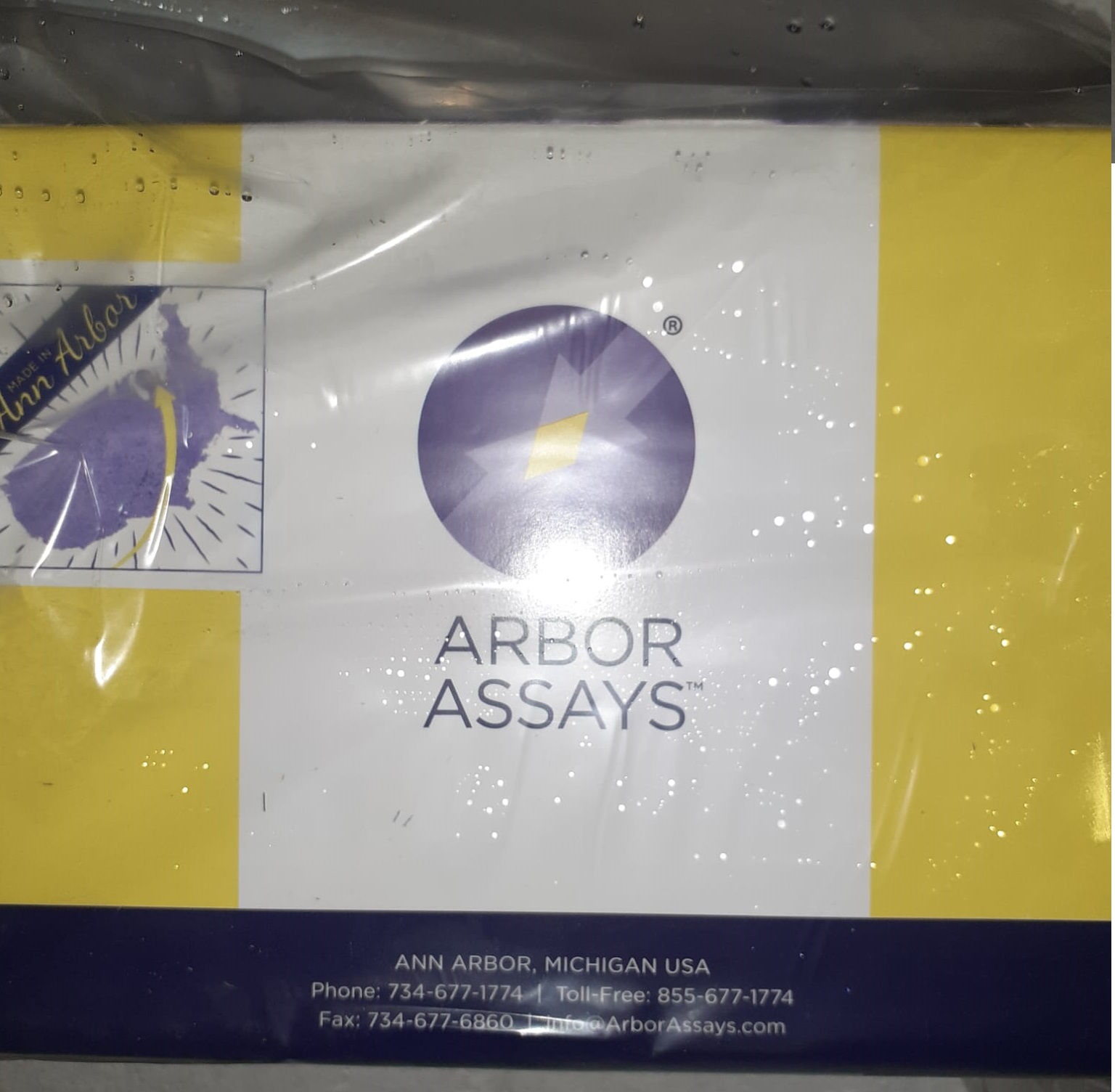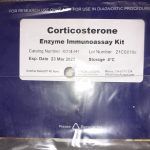Each reader is aware of that an enzyme accelerates a response by lowering the activation-energy barrier. Nevertheless, understanding how that is achieved by the construction of the enzyme and its interactions with secure complexes and transition states and, then, utilizing this to (re)design enzymes to catalyze novel reactions stay the “holy grail” of mechanistic enzymology. The mandatory basis is the free-energy profile that specifies the energies of the certain substate, product, and intervening intermediates in addition to the transition states by which they’re interconverted. When this free-energy profile is in comparison with that for the uncatalyzed response, methods for establishing and enhancing catalysis could be recognized. This Perspective reminds readers that the primary free-energy profile decided for an enzyme-catalyzed response, that for triosephosphate isomerase, was printed in Biochemistry in 1976 by Jeremy R. Knowles, W. John Albery, and colleagues.
They used the profile to suggest three steps of accelerating “subtlety” that may be influenced by evolutionary strain to extend the flux via the response coordinate: (1) “uniform binding” of the substrate, product, and intermediates; (2) “differential binding” of complexes in order that these are isoenergetic (to reduce the vitality of the intervening transition states); and (3) “catalysis of an elementary step” through which the transition state for the kinetically important chemical step is stabilized in order that flux could be decided by the speed of substrate binding or product dissociation. These papers proceed to information mechanistic research of enzyme-catalyzed reactions and supply ideas for the (re)design of novel enzymes.
Structural characterization of cassava linamarase-linamarin enzyme advanced: an built-in computational strategy
Cassava linamarase is a hydrolyzing enzyme that belongs to a glycoside hydrolase household 1 (GH1). It’s liable for breaking down linamarin to poisonous cyanide. The enzyme supplies a defensive mechanism for crops in opposition to herbivores and has varied functions in lots of fields. Understanding the construction of linamarase on the molecular degree is a key to avail its response mechanism. On this examine, the three-dimensional (3D) construction of linamarase was constructed for the primary time utilizing homology modelling and used to review its interplay with linamarin. Molecular docking calculations established the binding and orientation nature of linamarin, whereas molecular dynamics (MD) simulation established protein-ligand complexes’ stability. Binding-free vitality primarily based on MM/PBSA was additional used to rescore the docking outcomes.
An ensemble construction was discovered to be comparatively secure in contrast to the modelled construction. This examine sheds gentle on the exploration of linamarase in the direction of understanding its response mechanisms.Communicated by Ramaswamy H. Sarma.
Cardiac Toxicity: Utilizing Angiotensin-Changing Enzyme Inhibitors to Forestall Anthracycline-Induced Left Ventricular Dysfunction and Cardiomyopathy
Background: Anthracycline chemotherapies are efficient in many several types of most cancers. Nevertheless, cumulative doses are related to irreversible cardiac toxicity, most ceaselessly manifested within the growth of left ventricular dysfunction, cardiomyopathy, and congestive coronary heart failure. The onset of cardiomyopathy and subsequent coronary heart failure can lead to the interruption or discontinuation of remedy. Cardioprotective brokers, significantly angiotensin- changing enzyme inhibitors, have been proven to sluggish the development of left ventricular dysfunction and stop coronary heart failure.
Goals: This assessment assesses the efficacy of angiotensin-converting enzyme inhibitors within the prevention of anthracycline-induced left ventricular dysfunction.
Strategies: A literature search was carried out utilizing 4 digital databases.
Findings: Proof from this assessment means that angiotensin-converting enzyme inhibitors could also be efficient in stopping or lowering anthracycline- induced left ventricular dysfunction and subsequent cardiomyopathy and coronary heart failure.
Water-Mediated Oxidation of Guanine by a Restore Enzyme: Simulation Utilizing the ABEEM Polarizable Drive Area
The popularity mechanism of oxidative injury in organisms has lengthy been a analysis hotspot. Water is a vital medium within the recognition course of, however its particular function stays unknown. There’s a have to develop an appropriate power discipline that may adequately describe the electrostatic, hydrogen bond, and different interactions among the many molecules within the advanced system of the restore enzyme and oxidized base. The creating ABEEM polarizable power discipline (PFF) has been used to simulate the repaired enzyme hOGG1 and oxidized DNA (PDB ID: 1EBM) in a organic atmosphere, and the corresponding outcomes are higher than these of the fixed-charge power fields OPLS/AA and AMBER OL15. 8-Oxo-G is acknowledged by Gln315 of hOGG1 primarily via hydrogen bonds mediated by steady change of two water molecules. Phe319 and Cys253 are stacked on either side of the π planes of bases to type sandwich buildings.
The cost polarization impact provides an essential sign to drive the change of water molecules and maintains the popularity of oxidation bases by enzymes. The mediated predominant water molecule A and mediated auxiliary water molecule B collectively pull Gln315 to acknowledge 8-oxo-G by hydrogen bond interactions. Then, the cost polarization sign of solvent water molecule C with a big absolute cost causes absolutely the cost of O atoms in water molecule A or B to extend by roughly 0.2 e, and water molecule A or B leaves Gln315 and 8-oxo-G. The opposite water molecule and water molecule C synergistically acknowledge 8-oxo-G with Gln315. Though the water molecules between Gln315 and 8-oxo-G are eliminated, the MD simulation outcomes present that water molecules seem between Gln315 and 8-oxo-G in a really brief time (<2 ps). The dwell time of every water molecule is roughly 60 ps. The radial distribution perform and dwell time assist the correctness of the above mechanism. These polarization results and hydrogen bonding interactions can’t be simulated by a fixed-charge power discipline.
The antagonistic Metschnikowia andauensis produces extracellular enzymes and pulcherrimin, whose manufacturing could be promoted by the tradition elements
Organic management in opposition to microbial infections has a fantastic potential instead strategy as an alternative of fungicidal chemical substances, which may trigger environmental air pollution. The pigment producer Metschnikowia andauensis belongs to the antagonistic yeasts, however particulars of the mechanism by which it inhibits development of different microbes are much less identified. Our outcomes confirmed its antagonistic capability on different yeast species remoted from fruits or flowers and demonstrated that the antagonistic capability was properly correlated with the dimensions of the crimson pigmented zone. Now we have remoted and characterised its crimson pigment, which proved to be the iron chelating pulcherrimin. Its manufacturing was attainable even within the presence of 0.05 mg/ml copper sulphate, which is broadly utilized in natural vineyards due to its antimicrobial properties.
Manufacturing and localisation of the pulcherrimin strongly relied on composition of the media and different tradition elements. Glucose, galactose, disaccharides and the presence of pectin or sure amino acids clearly promoted pigment manufacturing. Increased temperatures and iron focus decreased the diameter of crimson pigmented zones. The impact of pH on pigment manufacturing different relying of whether or not it was examined in liquid or strong media. As well as, our outcomes counsel that different mechanisms moreover the iron depletion of the tradition media might contribute to the antagonistic capability of M. andauensis.

transgenicnews
Mapping enzyme-substrate interactions: its potential to assessment the mechanism of enzymes
With the rise of the need to make use of further sustainable processes for the commerce in our society, the modeling of enzymes has flip into important to completely comprehend their mechanism of movement and use this data to enhance and design their properties. A great deal of methods to assessment enzymes computationally exist they often have been categorized on sequence-based, structure-based, and the additional new artificial intelligence-based ones.
Albeit the abundance of methods to help predict the carry out of an enzyme, molecular modeling is crucial when attempting to know the enzyme mechanism, as they objective to correlate atomistic information with experimental data. Amongst them, methods that simulate the system dynamics at a molecular mechanics diploma of precept (classical strain fields) have confirmed to provide an entire analysis.
On this information chapter, we’ll analyze these strategies, emphasizing the importance of actual modeling of enzyme-substrate interactions. In the long term, a fast clarification of the transference of the information from evaluation analysis to the commerce is given accompanied with two examples of family enzymes the place their modeling has helped their exploitation.
Extreme-throughput expertise of product profiles for arabinoxylan-active enzymes from metagenomes
- Metagenomics is an thrilling totally different to hunt for carbohydrate-active enzymes from a wide range of sources. Generally, metagenomics reveals dozens of putative catalysts that require sensible characterization for extra utility in industrial processes. Extreme-throughput screening methods applicable with sufficient pure substrates are important for an right sensible elucidation of substrate preferences.
- Primarily based totally on DNA sequencer-aided fluorophore-assisted carbohydrate electrophoresis (DSA-FACE) analysis of enzymatic response merchandise, we generated product profiles to consequently infer substrate cleavage positions, ensuing throughout the expertise of enzymatic degradation maps.
- Product profiles had been produced in high-throughput for arabinoxylan (AX)-active enzymes belonging to the glycoside hydrolase households GH43 (subfamilies 2 (MG432), 7 (MG437) and 28 (MG4328)) and GH8 (MG8) starting from twelve (arabino)xylo-oligosaccharides.
- These enzymes had been discovered via sensible metagenomic analysis of faeces from the North American beaver (Castor canadensis). This work reveals how enzyme loading alters the product profiles produced by all enzymes studied and supplies notion into AX degradation patterns revealing sequential substrate preferences of AX-active enzymes.
- SignificanceArabinoxylan is very found throughout the hemicellulosic fractions of rice straw, corn cobs and rice husk. Altering arabinoxylan into (arabino)xylo-oligosaccharides as added price merchandise that could be utilized in meals, feed, and cosmetics presents a sustainable and monetary totally different for the biorefinery industries. An atmosphere pleasant and worthwhile AX degradation requires a set of enzymes with particular traits.
As a consequence of this reality, enzyme discovery and analysis of substrate preferences is of utmost significance. Beavers, as buyers of woody biomass are a promising provide of a repertoire of enzymes ready to deconstruct hemicelluloses into soluble oligosaccharides. Extreme-throughput analysis of oligosaccharide profiles produced by these enzymes will assist throughout the assortment of in all probability essentially the most relevant enzymes for the biorefinery.




